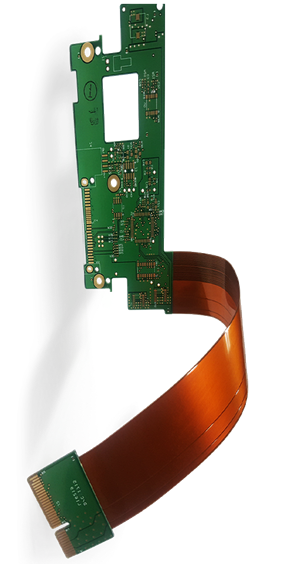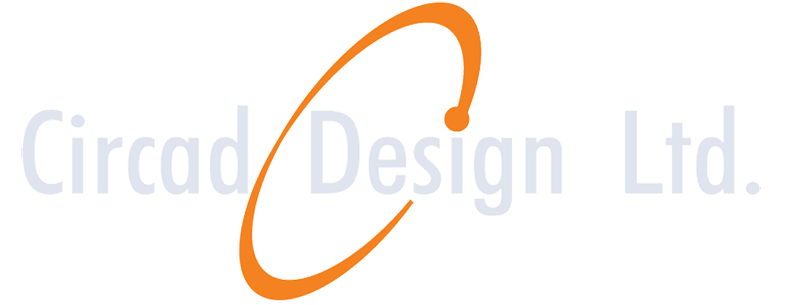Flexi PCB - When Size, Weight, And Durability Are Important
A flex PCB has become integral to modern electronics, offering versatility and innovation in design.
These boards, crafted from thin, flexible materials like polyester or polyimide, play a crucial role in applications where space, weight, and durability are paramount considerations. Despite the disadvantages of cost and complexity, our expertise in single layer flexible and rigid-flex PCB design has proven of value for clients requiring products that are small, lightweight, and durable.
Construction of a Flexi PCB
Flex PCBs derive their name from their flexibility, allowing them to conform to the shape of the device they are integrated into. This flexibility is achieved through the use of bendable materials, making them ideal for applications with dynamic requirements.
Advantages of a Flex PCB
Flex PCBs stand out by seamlessly combining the best qualities of connectors, printed circuit boards, wires, and cables into a single, integrated interconnect, offering a multitude of possibilities for innovative product designs.
Space Efficiency
One advantage of flexible circuit boards is their ability to achieve tight packaging within small enclosures. By assembling the board flat and subsequently folding it to fit the smaller enclosure, these boards enable efficient space utilization without compromising on functionality.
Weight Considerations
A flex PCB is inherently lightweight, making it suitable for applications where minimizing weight is crucial. Industries such as aerospace, automotive, and wearable technology benefit significantly from the reduced weight offered by Flex PCBs.
Applications in Miniaturization
Rigid flex circuits find utility in applications demanding miniaturization, such as medical devices, aerospace technology, and wearable electronics. The ability to seamlessly integrate flexibility with rigidity allows for intricate designs that wouldn't be feasible with traditional rigid PCBs.
Durability in Harsh Environments
The robust nature of Flexi PCBs allows them to withstand harsh environments, vibrations, and shocks. This durability makes them suitable for applications where electronic components may be exposed to challenging conditions.


Rigid-Flex PCBs: Bridging the Gap Between Flexibility and Rigidity
Rigid-Flex PCBs represent an evolutionary step in electronic design, combining the advantages of both rigid and flexible circuit boards. A flex rigid PCB represents a combination of rigid and flexible circuit boards permanently connected to one another.
Rigid flex circuit boards serve as printed cable harnesses, facilitating flexible or less bulky electrical connections between rigid PCBs. The unique design of a rigid flex board allows for seamless integration in applications that demand a delicate balance between flexibility and structural integrity.
We can advise clients how to take advantage of the potential benefits of a rigid-flex PCB design.
Construction of Rigid-Flex PCBs
Rigid-Flex PCBs consist of both rigid and flexible circuit boards that are interconnected. This integration is achieved through the use of plated through-holes, allowing for electrical connections between the different sections of the board.
Advantages of Rigid-Flex PCBs
Cost-Effective Design
While the initial manufacturing cost of Rigid-Flex PCBs may be higher than traditional PCBs, the overall cost-effectiveness comes into play during the assembly phase. The reduced need for connectors and cables streamlines the assembly process, ultimately saving costs.Click on this text to edit it.
Space Optimization
Rigid-Flex PCBs excel in applications where space is at a premium. The ability to fold and integrate multiple sections into a single unit enables the creation of compact, yet intricate, electronic designs.
Reliability and Durability
The elimination of connectors and cables also enhances the reliability of Rigid-Flex PCBs. With fewer points of failure, a rigid flex board offers improved durability and a longer lifespan.
Design Considerations for Flex PCBs and Rigid-Flex PCBs
Successful design of Flex PCBs and Rigid-Flex PCBs involves careful consideration of various factors.
Material Selection
Choosing the right materials is crucial in ensuring the desired flexibility and reliability. Polyimide is a popular choice due to its excellent thermal stability and flexibility.
Layer Stackup
The layer stackup of a PCB determines its mechanical and electrical properties. For Flex and Rigid-Flex PCBs, a thoughtful layer stackup is essential to maintain the balance between flexibility and rigidity.
Bending Radius
Understanding the bending radius of Flex PCBs is vital to prevent damage during installation and use. Manufacturers need to adhere to specific bending radius guidelines to ensure the board's longevity.
Plated Through-Holes
In Rigid-Flex PCBs, plated through-holes play a crucial role in connecting the rigid and flexible sections. Careful attention to the placement and design of these holes is necessary to maintain electrical integrity.

Circad's Expertise in Flex PCB Design
Circad stands at the forefront of PCB design, ready to tackle any challenge and offer comprehensive solutions tailored to specific requirements. Our proficiency extends to guiding clients on harnessing the full spectrum of potential benefits offered by flex PCB designs. Feel free to reach out to us to discuss your unique design needs in detail.

PCB DESIGN

PROTOTYPE ELECTRONICS

PCB MANUFACTURING








